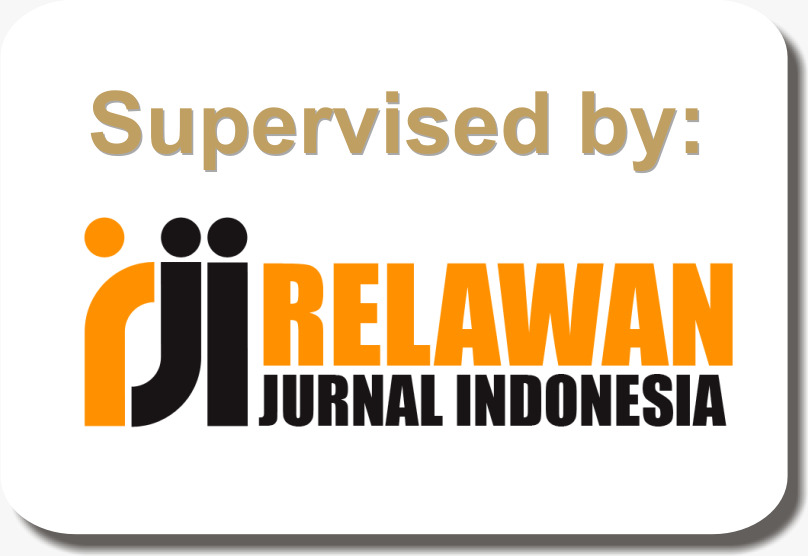Artificial Neural Network Backpropagation for Predicting Rainfall (Case Study in Sultan Muhammad Kaharuddin Meteorological Station)
DOI:
https://doi.org/10.30599/jti.v15i1.2110Keywords:
Rainfall Prediction, Artifial Neural Network, BackpropagationAbstract
The climate of a region is strongly influenced and determined by the amount of rainfall in the region. Therefore, knowing the results of rainfall predictions in that area will provide an overview of the climatic conditions that will occur so that anticipatory steps can be taken against unwanted possibilities. This study aims to make predictions of rainfall in Sumbawa Regency for 2023 using a Backpropagation Neural Network. The data used is rainfall data from 2008 to 2022 recorded at the Sultan Muhammad Kaharuddin Meteorological Station. Data Processing is carried out in three stages, namely the data normalization stage, the data training stage, and the data testing stage. The prediction results obtained show that the highest rainfall occurs at the beginning and end of the year, namely January, February, March, and April with rainfall of 343,4 mm/month, 421,3 mm/month, 295,2 mm/month, and 134,1 mm/month. Whereas at the end of the year it takes place in November (178.8 mm/month) and December (223.7 mm/month). The precipitation decline graph (start of dry season) starts from May (24.2mm/month) to September (22.1mm/month) with a dry peak in July (2mm/month). Whereas for the end of the year it takes place in November (302,1 mm/month) and December (308,4 mm/month). The decrease in rainfall (early dry season) begins in May (51,7 mm/month) to October (66 mm/month) with the peak of the dry season in June to August (0 mm/month).
Downloads
References
Abhishek, K., Singh, M.P.,Ghosh, S., dan Anand, A, (2012). Weather Forecasting Model using Artificial Neural Network. Procedia Technol., 4, 311–318, from https://doi.org/10.1016/j.protcy.2012.05.047
Ammar, G.A., Haidar, Y.B., dan Dawish, Q.A. (2017). An Artificial Neural Network Model For Monthly Precipitation Forecasting Inhoms Station, Syria. American Journal of Innovative Research and Applied Sciences, 240-246.
Devi, C.J., Reddy, P.S., Kumar, K.V., , Reddy, M.B., dan Nayak, N.R. (2012). ANN Approach for Weather Prediction using Back Propagation. International Journal of Engineering Trends and Technology, 3, 19-23.
Kusumadewi, S. (2003). Artificial Intelligence: Teknik dan Aplikasinya, Graha Ilmu, Jogjakarta.
Lee, J., Kim, C., Lee, J.E., Kim, N.W., dan Kim, H. (2018). Application of Artificial Neural Networks to Rainfall Forecasting in the Geum River Basin, Korea. Water, 10, 1-14.
Mastur, I. dan Hadi, L. (2005). Implementasi Jaringan Syaraf Tiruan Untuk Mengidentifikasi Pola Desain Produk Berdasarkan Preferensi Pelanggan Menggunakan Kansei Engineering System. Teknoin, 10, 197-208
Mislan, Haviluddin, Hardwinarto, S., Sumaryono, dan Aipassa, M. (2015). Rainfall Monthly Prediction Based on Artificial Neural Network: A Case Study in Tenggarong Station, East Kalimantan - Indonesia. Procedia Comput. Sci., 59, 142–151.
Nayak, R.D., Mahapatra, A., dan Mishra, P. (2013). A survey on rainfall prediction using artificial neural network. Int. J. Comput. Appl., 72, 32–40
Narvekar, M. dan Fargose, P. (2015). Daily Weather Forecasting using Artificial Neural Network. International Journal of Computer Applications, 121, 9-13.
Ritha, N., Bettize M., dan Dufan, A. (2016). Prediksi Curah Hujan dengan Menggunakan Algoritma Levenberg Marquardt dan Backpropagation. Jurnal Susutainable, 5, 11-16
Seno, B.A., Adiwijaya, and Nhita, F. (2014), Prediksi Curah Hujan Menggunakan Evolving fuzzy, Universitas Telkom, Fakultas Teknik Informatika.
Sofian, M.I., Affandi, K.A., Iskandar, I., and Apriani, Y. (2018). Monthly rainfall prediction based on artificial neural networks with backpropagation and radial basis function. International Journal of Advances in Intelligent Informatics, 4, 154-166.
Siang, J.J. 2005. Jaringan Syaraf Tiruan dan Pemogramannya Menggunakan Matlab. Yogyakarta: Andi Offset.
Supriyati, Tjahjono,B., and Effendy, S. (2018). Analysis of Rainfall Pattern for Lahar Mitigation at Sinabung Volcano. Jurnal Ilmu Tanah dan Lingkungan, 20 (2), 95-100.
Wu, J. dan Chen, E. (2009). A Novel Nonparametric Regression Ensemble for Rainfall Forecasting Using Particle Swarm Optimization Technique Coupled with Artificial Neural Network Jiansheng. Springer-Verlag Berlin Heidelberg, 3, 49-58.
Downloads
Published
How to Cite
Issue
Section
License
Copyright (c) 2023 Romi Aprianto, Syarif Fitriyanto, Hermansyah, Sri Nurul Walidain

This work is licensed under a Creative Commons Attribution 4.0 International License.








